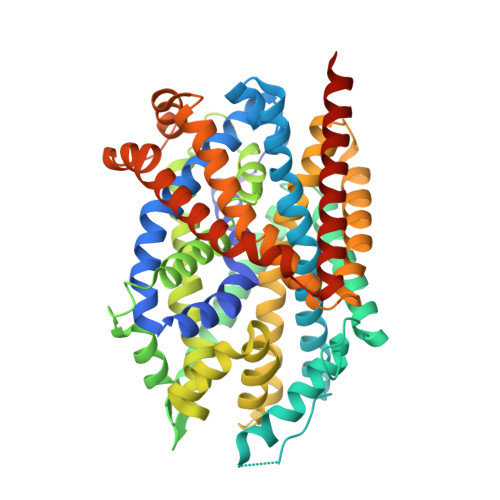Structures of LeuT in bicelles define conformation and substrate binding in a membrane-like context.
Wang, H., Elferich, J., Gouaux, E.(2012) Nat Struct Mol Biol 19: 212-219
- PubMed: 22245965
- DOI: https://doi.org/10.1038/nsmb.2215
- Primary Citation of Related Structures:
3USG, 3USI, 3USJ, 3USK, 3USL, 3USM, 3USO, 3USP - PubMed Abstract:
Neurotransmitter sodium symporters (NSSs) catalyze the uptake of neurotransmitters into cells, terminating neurotransmission at chemical synapses. Consistent with the role of NSSs in the central nervous system, they are implicated in multiple diseases and disorders. LeuT, from Aquifex aeolicus, is a prokaryotic ortholog of the NSS family and has contributed to our understanding of the structure, mechanism and pharmacology of NSSs. At present, however, the functional state of LeuT in crystals grown in the presence of n-octyl-¦Â-D-glucopyranoside (¦Â-OG) and the number of substrate binding sites are controversial issues. Here we present crystal structures of LeuT grown in DMPC-CHAPSO bicelles and demonstrate that the conformations of LeuT-substrate complexes in lipid bicelles and in ¦Â-OG detergent micelles are nearly identical. Furthermore, using crystals grown in bicelles and the substrate leucine or the substrate analog selenomethionine, we find only a single substrate molecule in the primary binding site.
Organizational Affiliation:
Vollum Institute, Oregon Health & Science University, Portland, Oregon, USA.
















